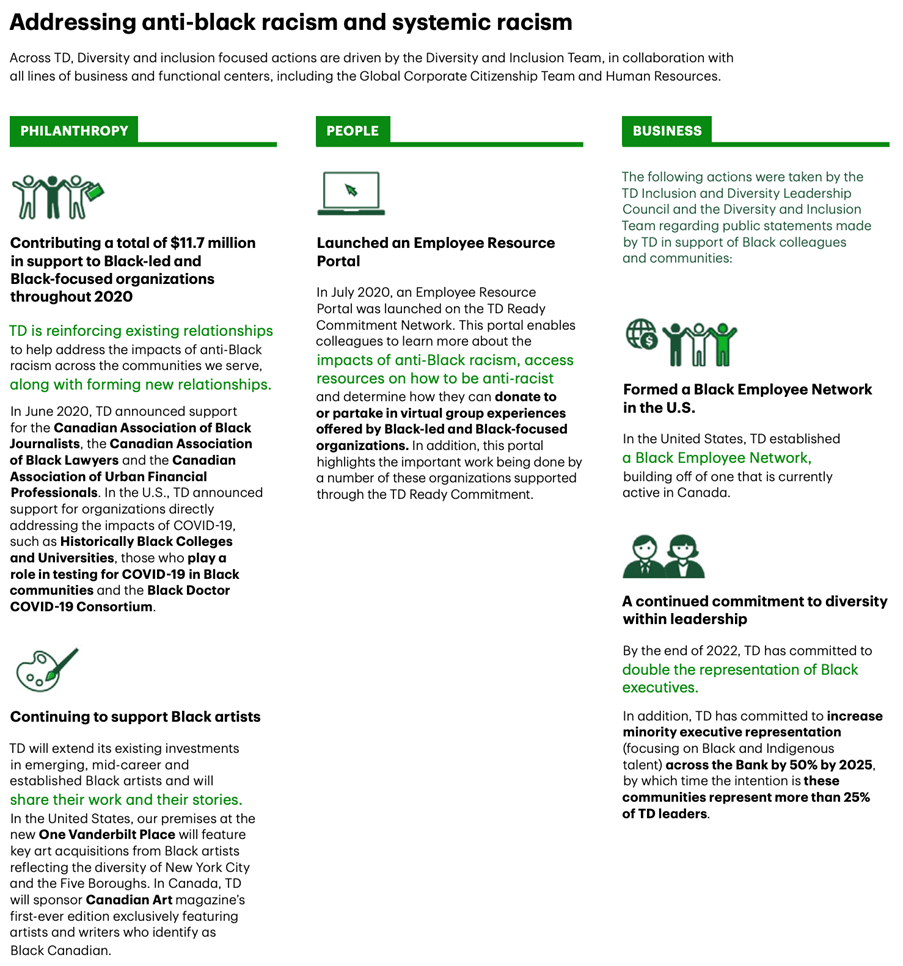When reporting your organization’s anti-racism efforts, make them ‘skimmable’
TD Bank’s recent corporate newsletter outlining how it’s tackling diversity, equity and inclusion enables readers to see the organization’s vision for the future.

TD Bank Group recently published its third quarter Corporate Citizen Newsletter, in which it outlined efforts for achieving a “more sustainable and inclusive tomorrow.” Those strategies promote diversity, equity and inclusion, as well as anti-racism initiatives:
The organization’s global head of sustainability and corporate citizenship, Andrea Barrack, opened the newsletter by directly addressing issues of racism and racial inequality, transitioning to an outline of detailed steps TD Bank is taking to contribute to change.
Her remarks read, in part:
Throughout the last six months, we have witnessed traumatic racist events that have caused collective grief, anguish, and sadness across our society. These times have been particularly difficult for many members of Black and Indigenous communities who have long shared these realities and experienced systemic inequities.
… It is strikingly clear that we must work together, not only to help build an inclusive future, but to also help drive more equitable outcomes across our communities. Two recent examples highlight our commitment in action to helping build inclusion and equity.
The rest of the newsletter breaks the bank’s efforts into several well-designed sections, including this on addressing anti-black racism and systemic racism:
What makes this so striking are the simple, yet effective visuals and compartmentalized parts of its overall moves to support racial equality as well as diversity. These efforts can’t be summed up in bullet points, but organizing the information helps the reader skim and more quickly grasp the overall vision.
Highlighted phrases in green not only fits with the brand’s color scheme, but also draws out the most important elements, which includes TD’s commitment to doubling the representation of Black executives and launching an employee resource portal to educate its workforce on the effects of anti-Black racism, along with information on how to be anti-racist.
By organizing the efforts into columns including “philanthropy,” “people” and “business,” readers can also see that the initiatives extend farther than a one-time donation or a pledge to increase diversity within TD Bank. Instead, the organization’s strategy is a cross-departmental effort that asks employees to actively engage, as well as using its position and influence to amplify voices in the Black community.
When creating a strategy to address racial inequality, don’t stop at a statement condemning racism and pledging more diversity.
Instead, take a page from TD Bank’s playbook (or, in this case, newsletter) and set meaningful internal and external goals for programs that drive change. Build and explain your strategy with straightforward language and information organized in ways that enable your stakeholders to see the full vision of your efforts, along with how each piece fits into the whole. Doing so will increase understanding as well as engagement, both from employees and your community.







